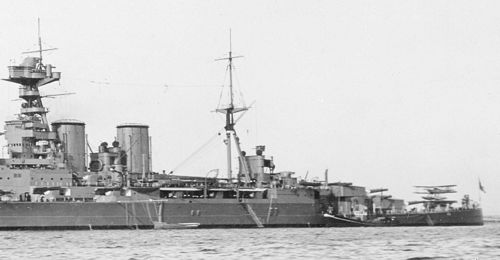Catalogue number 71095
HMS Hood detail
Like most capital ships at the time, HMS Hood was fitted out with two pairs of 21 inch torpedo tubes above waterline, the armoured doors can be seen at the level of the main mast just aft of the gangway. Forward of these doors, above the stern of the moored cutter, are the two sealed off ports of a second pair of tubes that was planned but never fitted. Single underwater tubes were also located in the usual flat forward but were removed in 1937.
12.9cm x 7.9cm Gelatin silver print
|
 |